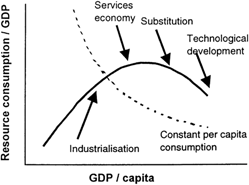Published online by Cambridge University Press: 04 June 2015

Over the last decade, our understanding regarding the nature and drivers of criticality risk has matured significantly. We review modeling efforts to date, specific to evaluation of future material availability, and identify research gaps.
Many advanced energy technologies are fundamentally “materials-dependent”; they are enabled directly by, or designed around, a particular material or materials. Society's acute dependence on materials has increased in recent years as these technologies tap into an ever broader range of the periodic table and, therefore, into a broader set of underdeveloped and complex supply chains. Ultimately, concern around the supply of materials strategic to energy and security interests has led to the development of a range of systems used to assess criticality—the confluence of vulnerability and risk. Concerning the assessment of criticality risk, this review accomplishes two primary goals. First, through a review of several broad assessments of criticality metrics, we identify those metrics that incorporate assessment of future production and consumption. We review the methods that have been applied to project production and consumption along two axes, one around degree of detail or granularity pursued by the model and the second around the degree to which market function is modeled endogenously. Regarding the second, material projection methods can be broadly classified as (a) those which project material flows only and (b) those which use market modeling to explicitly simulate (endogenously) the associated economic behavior and its implication on material flows.